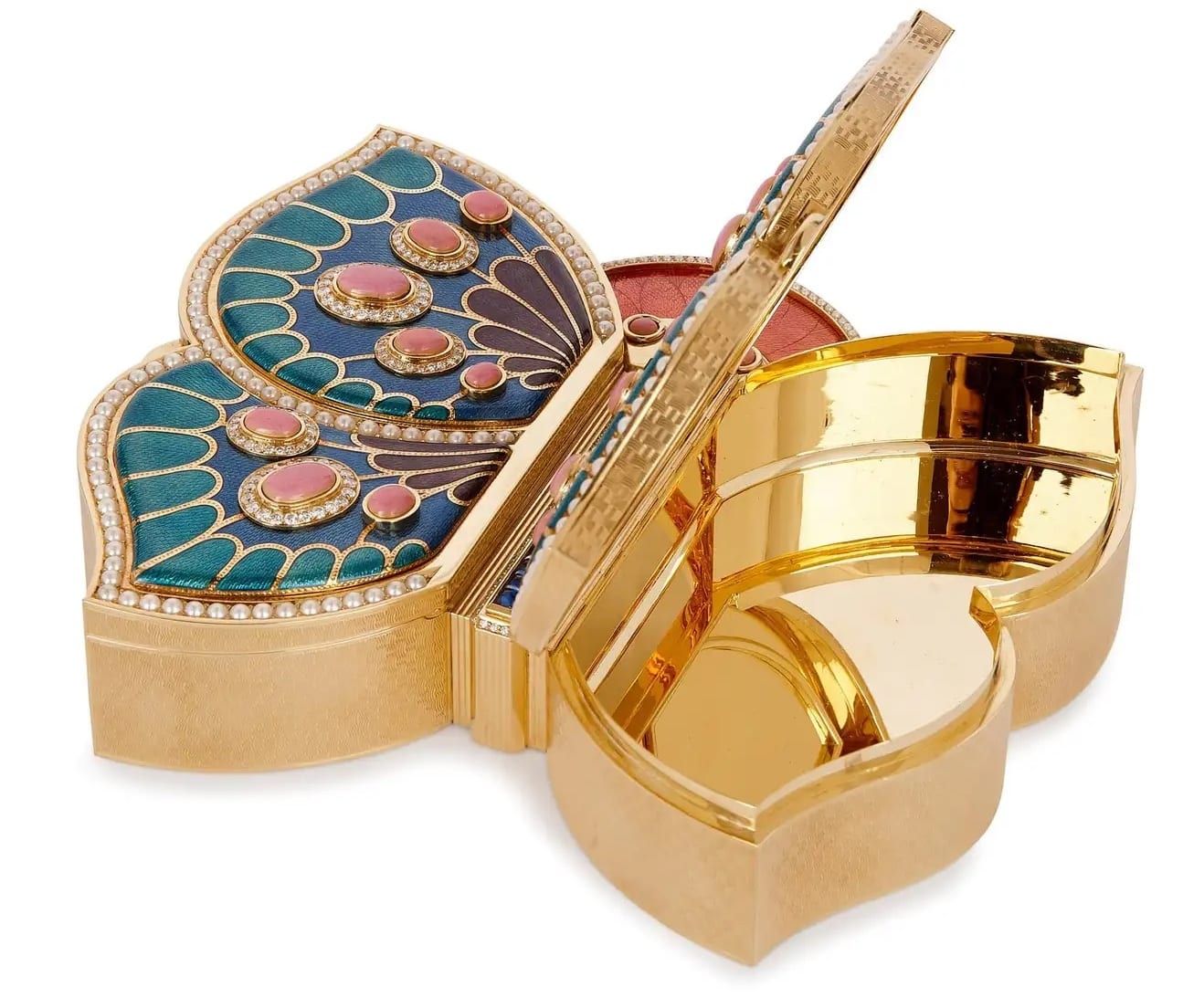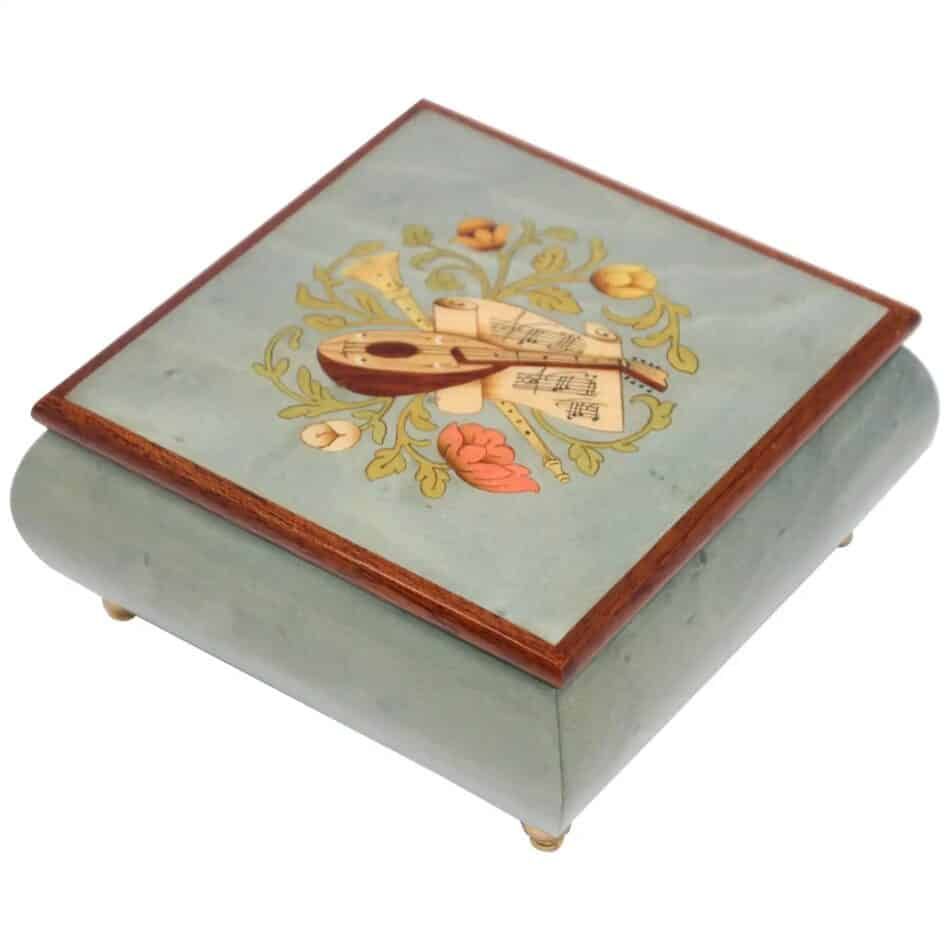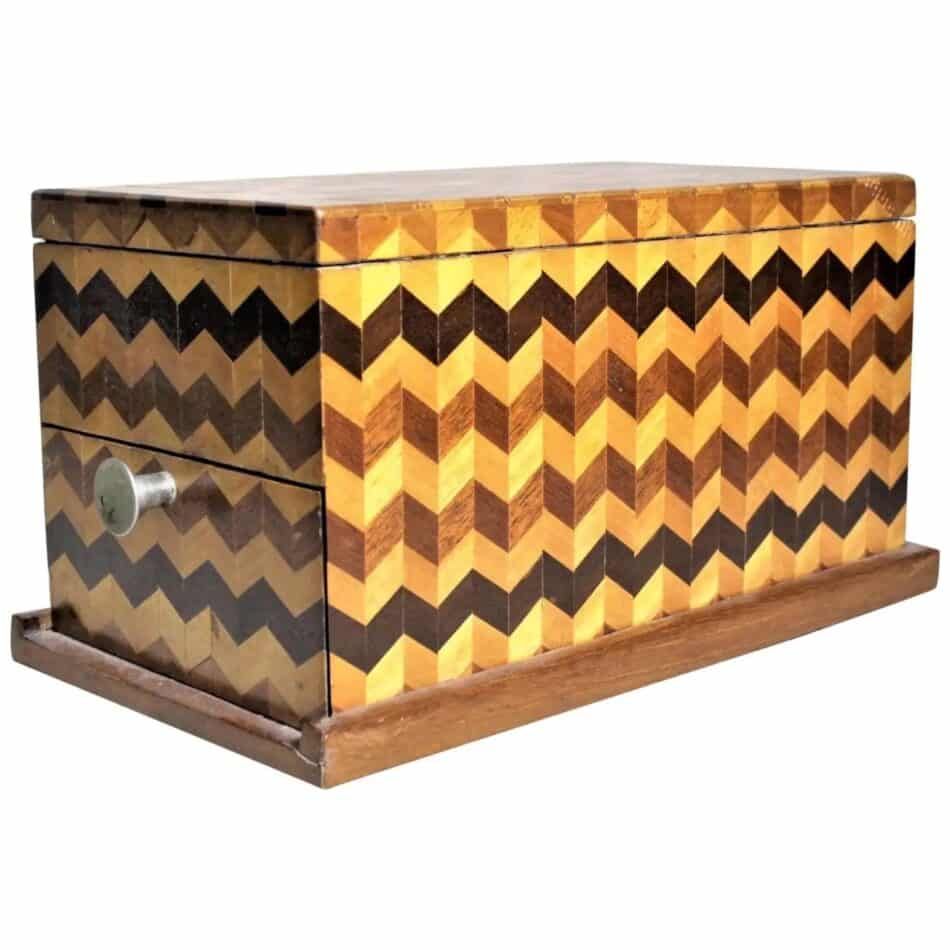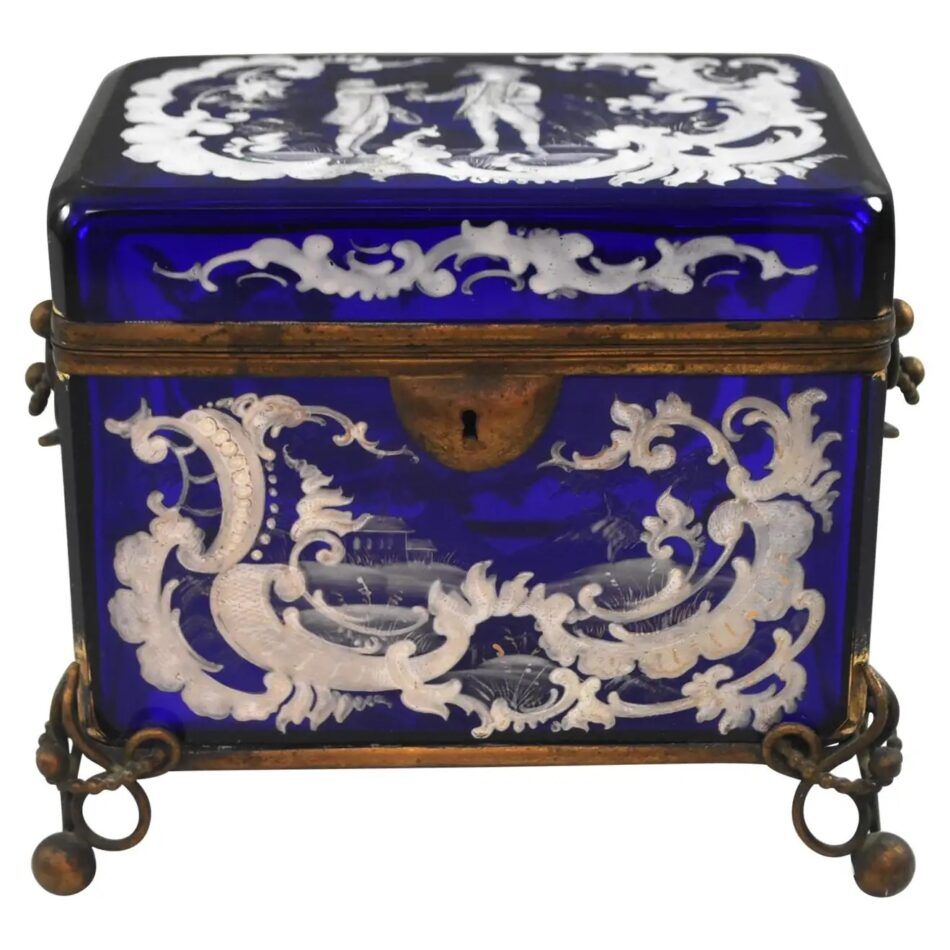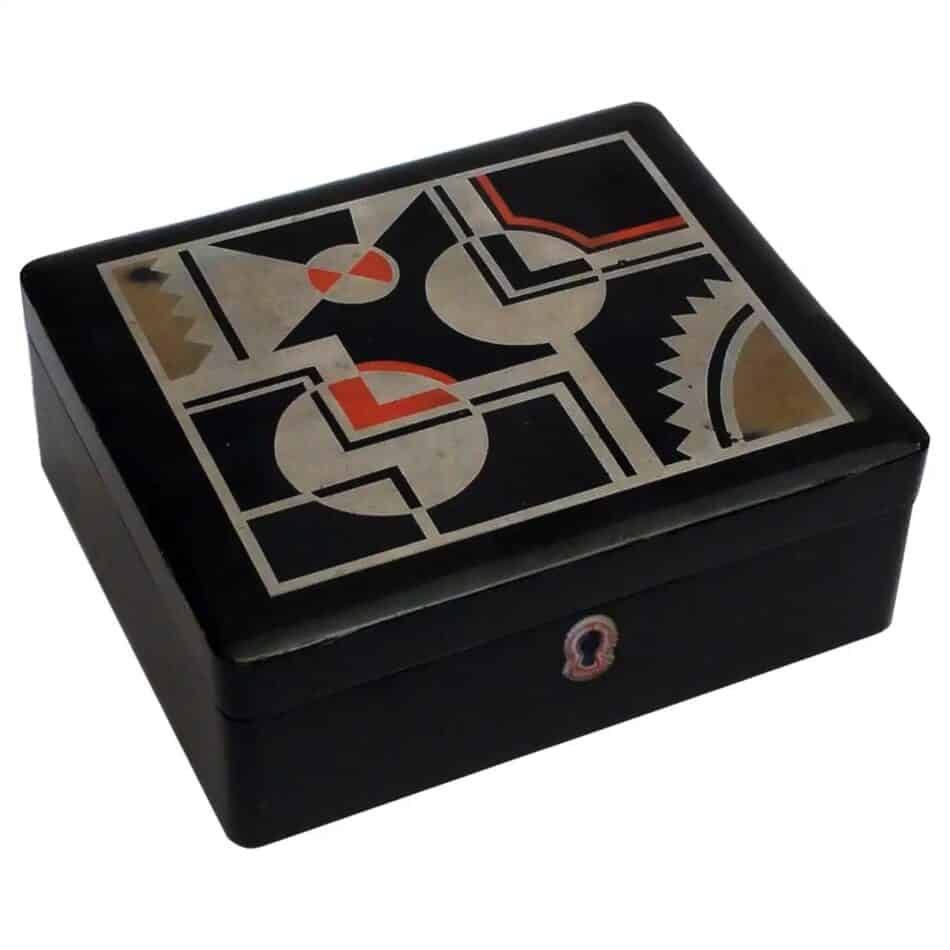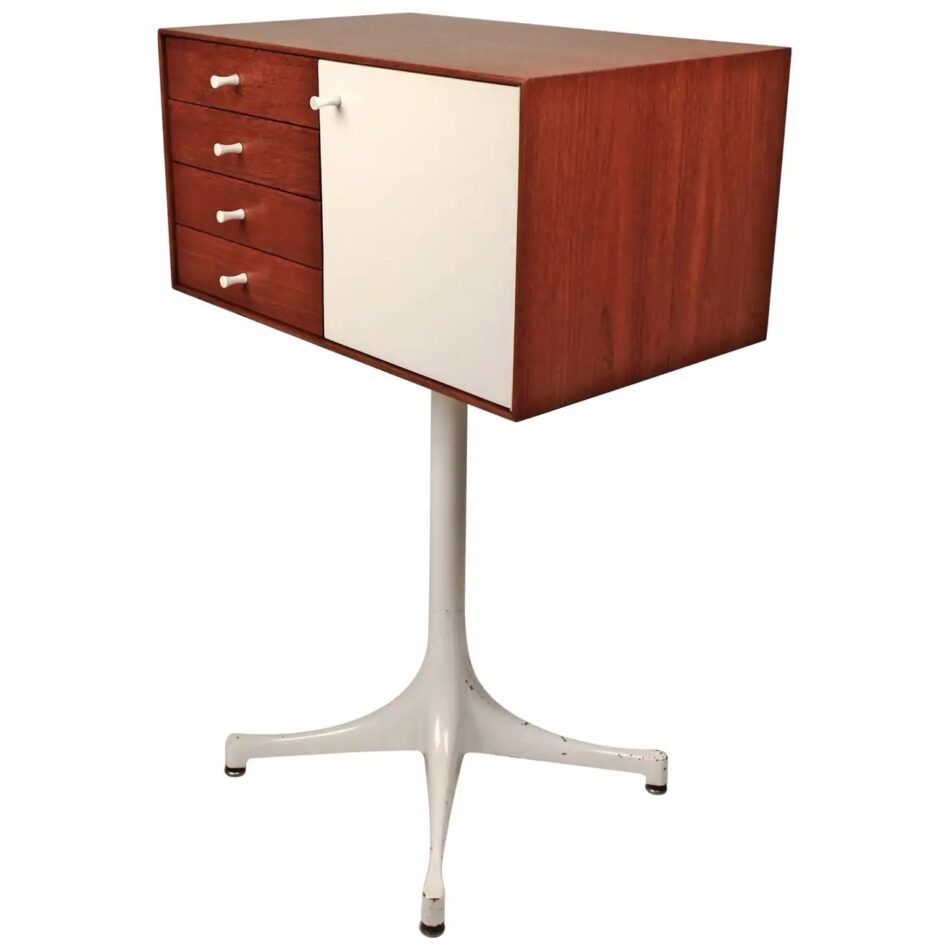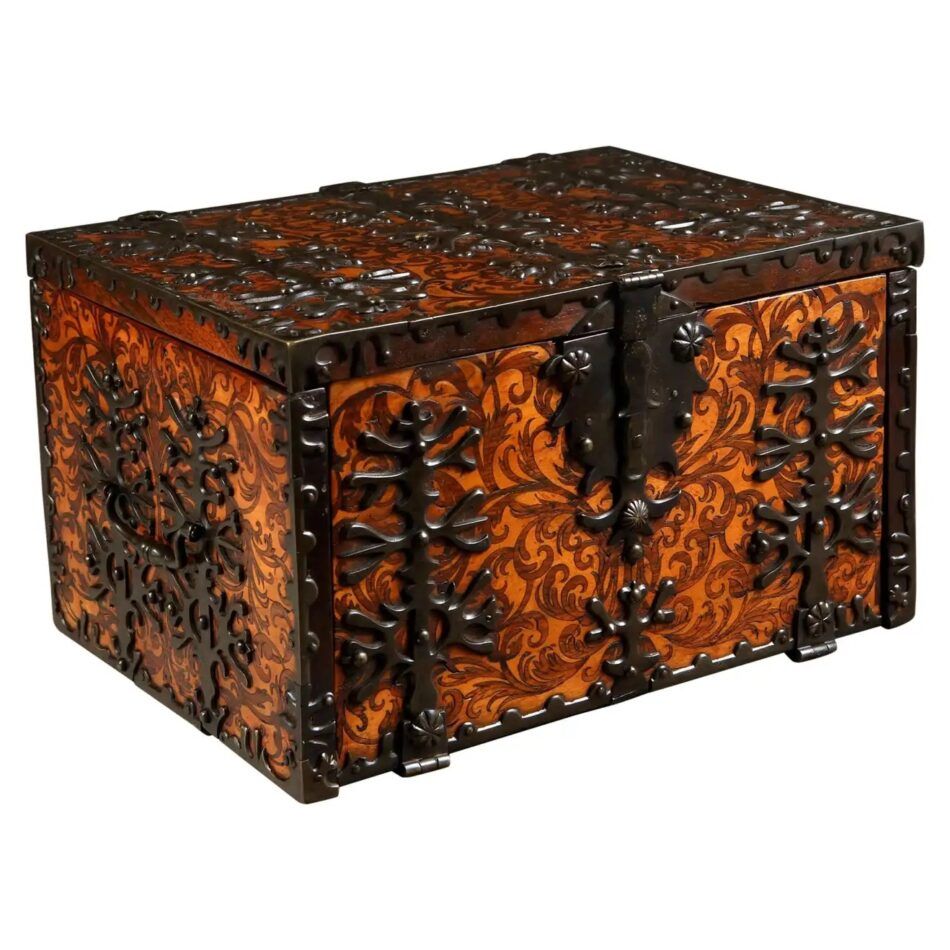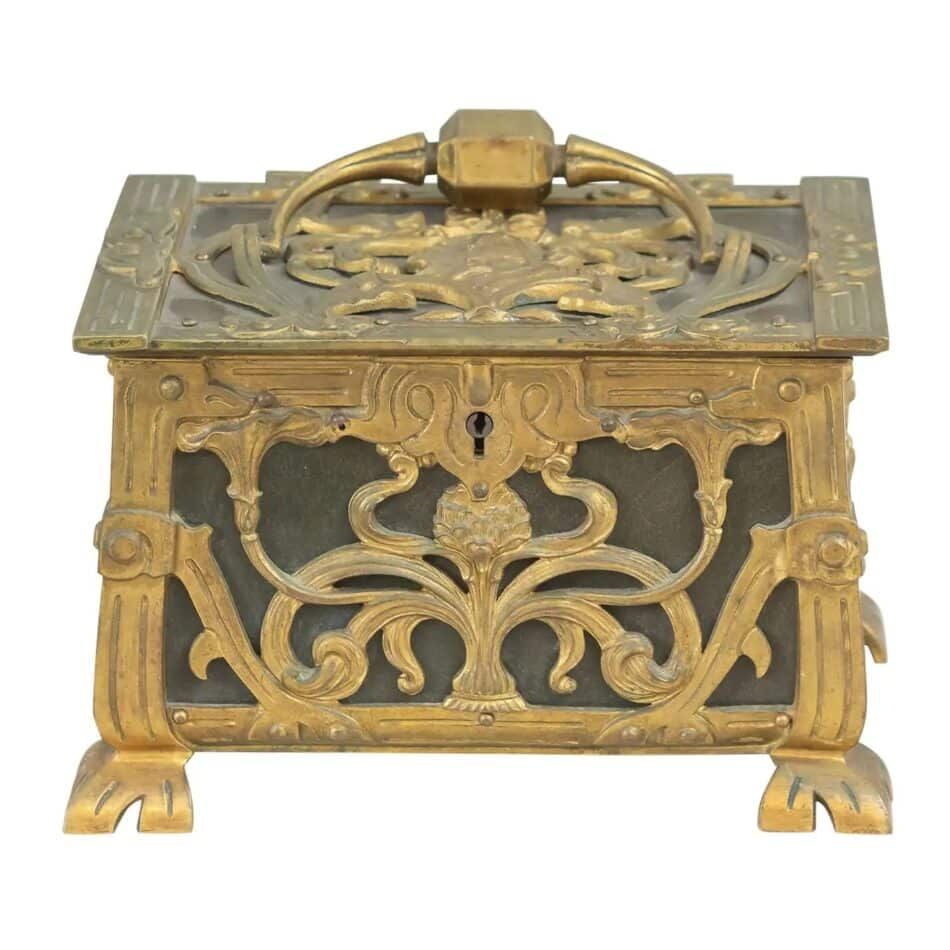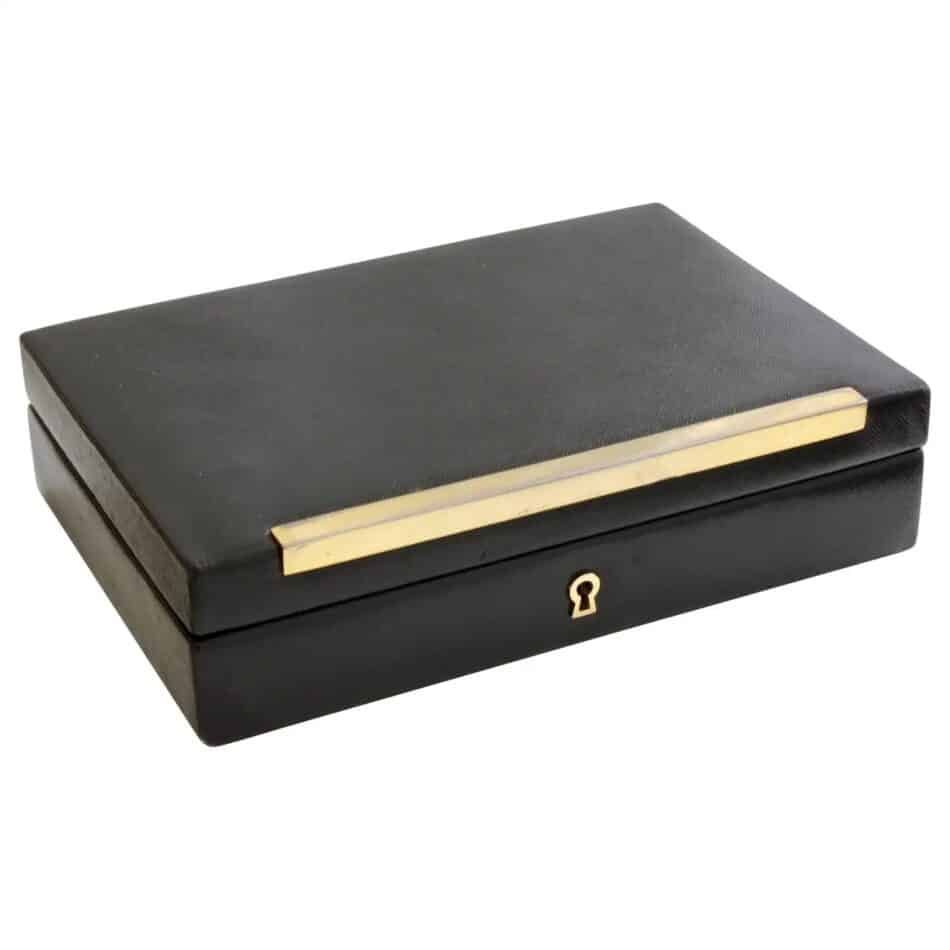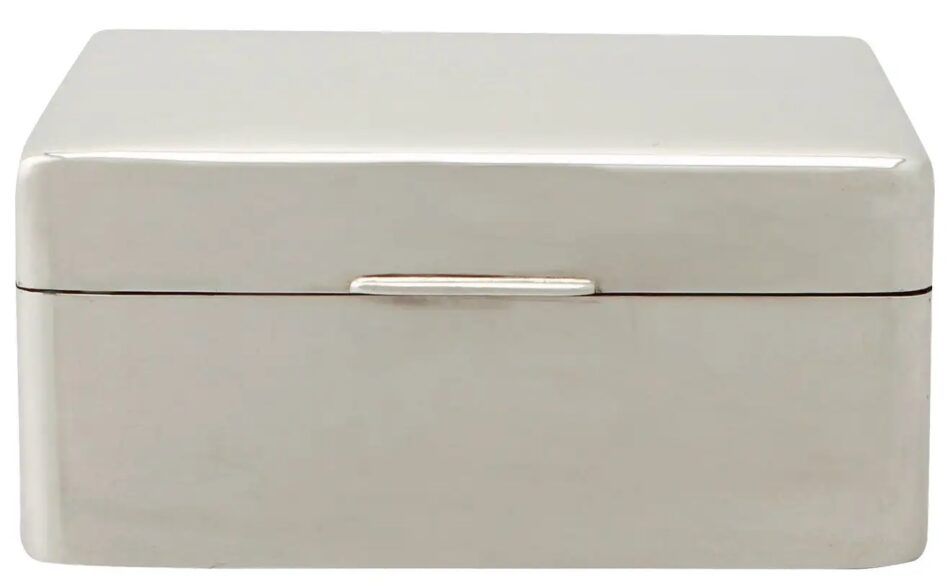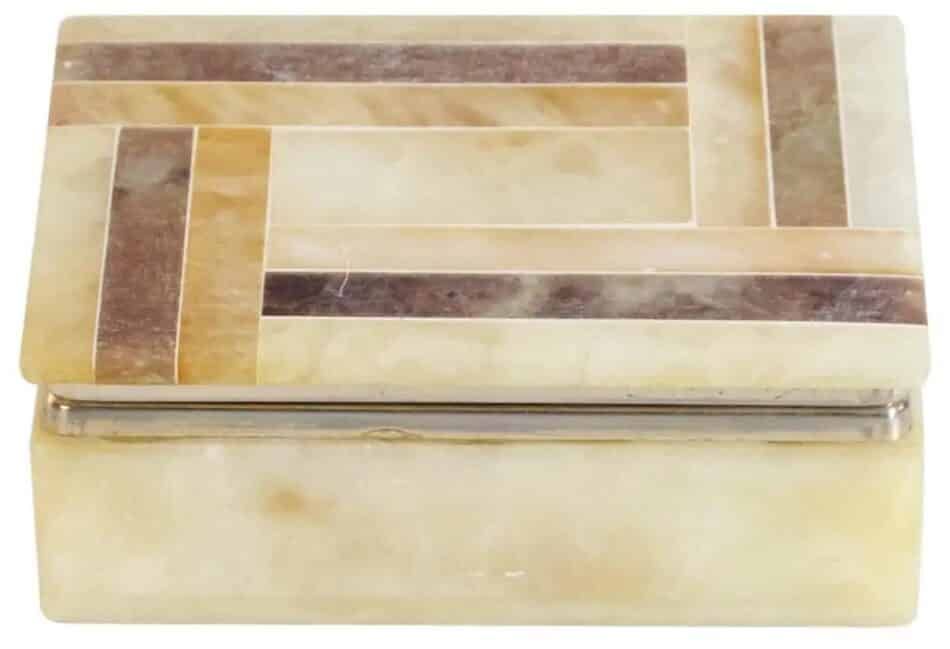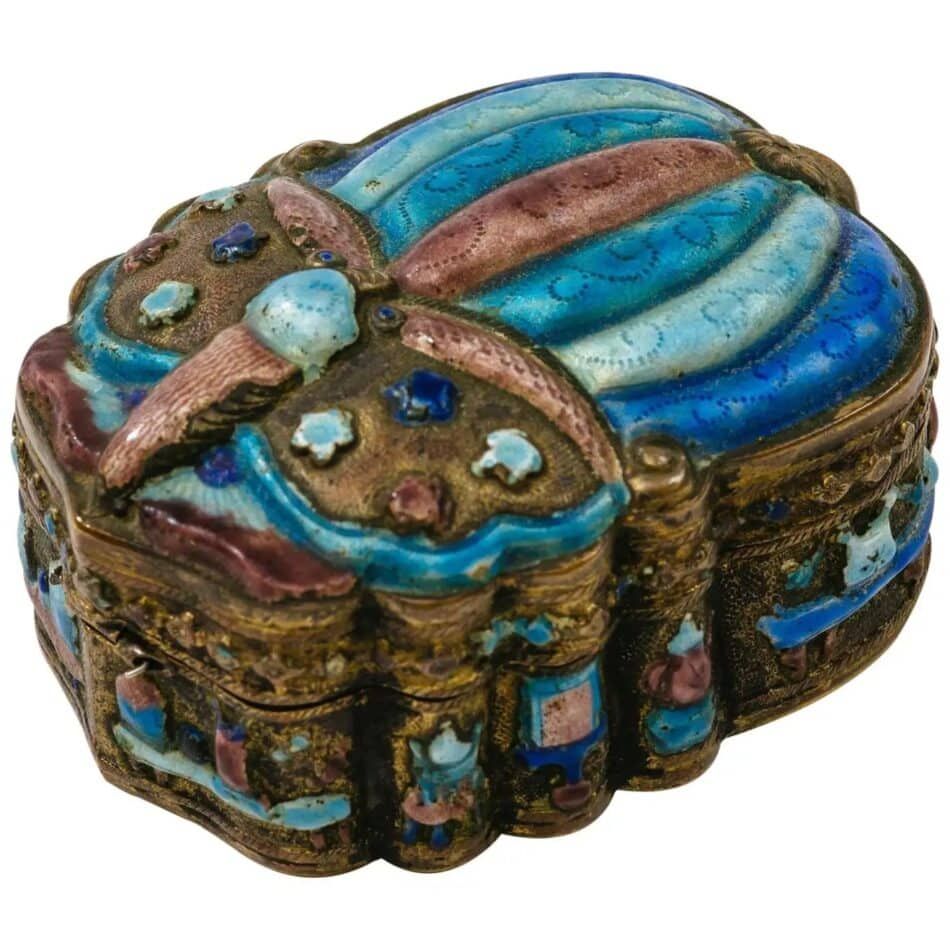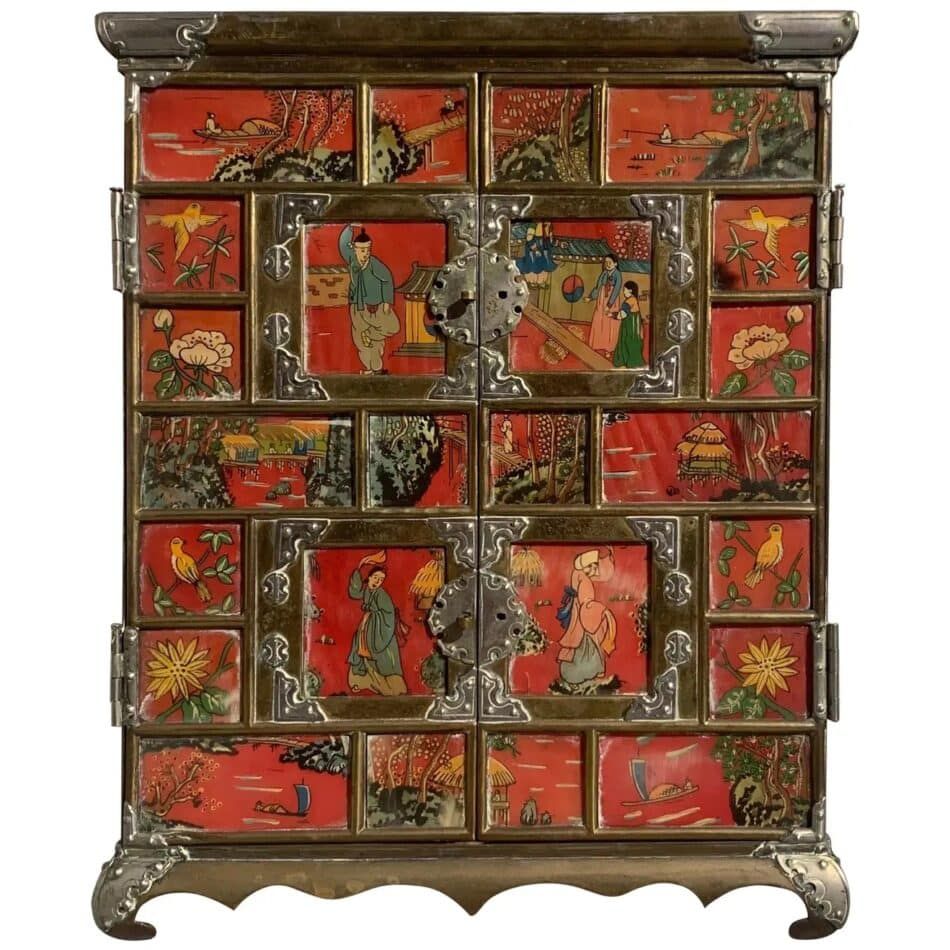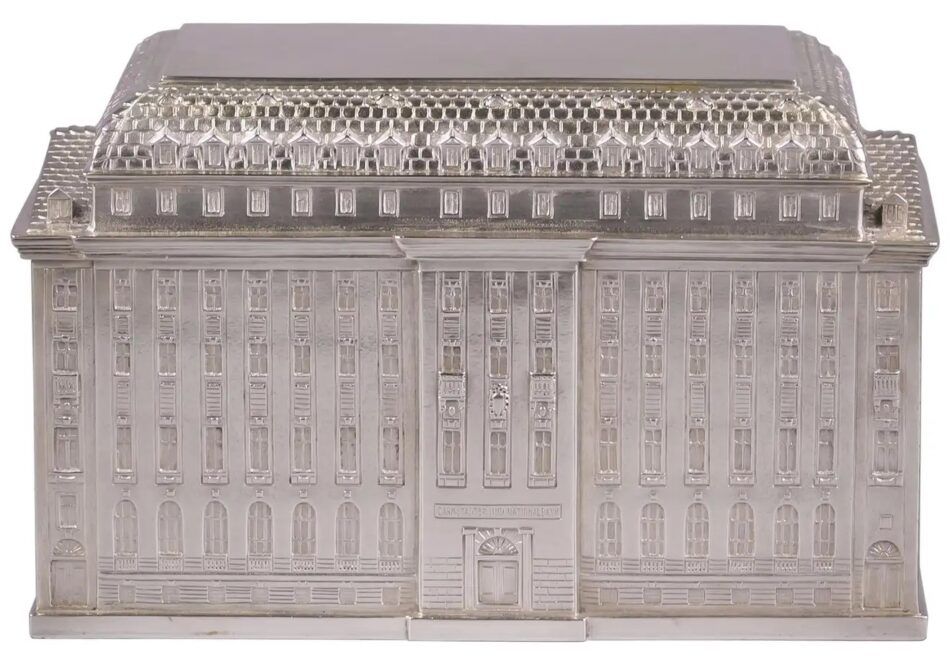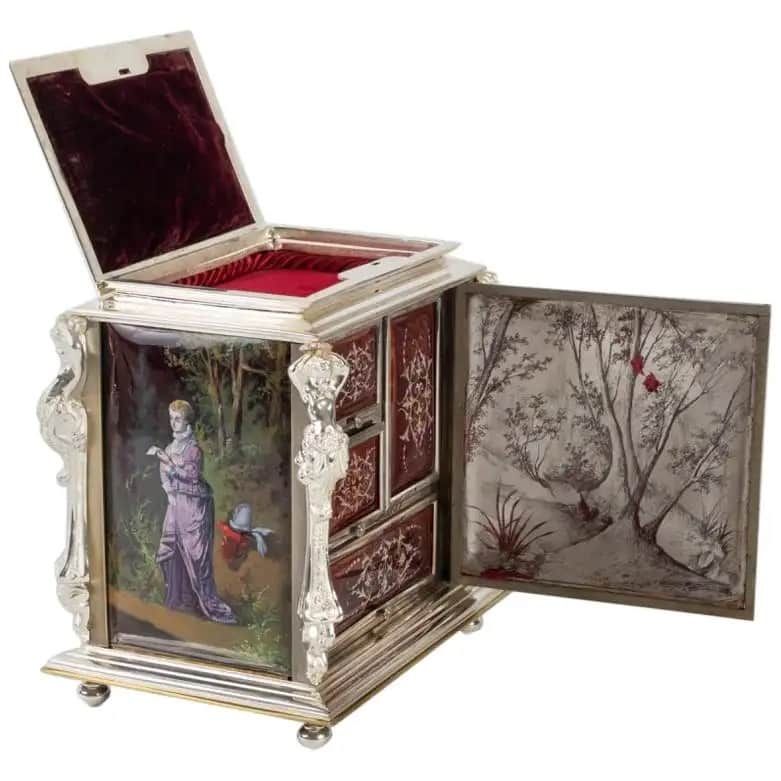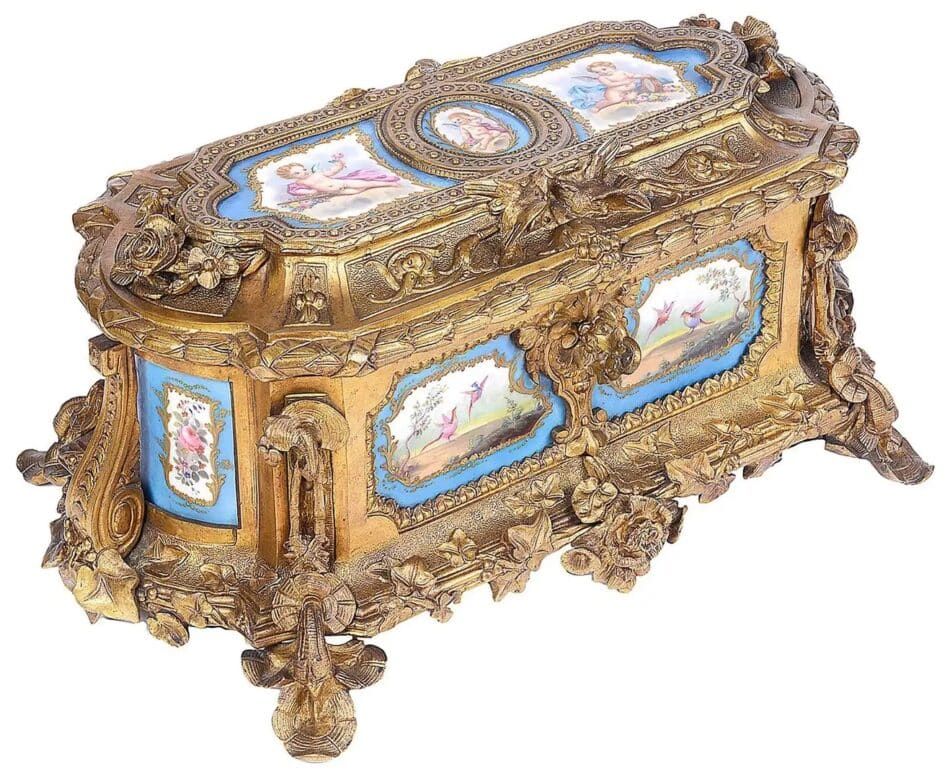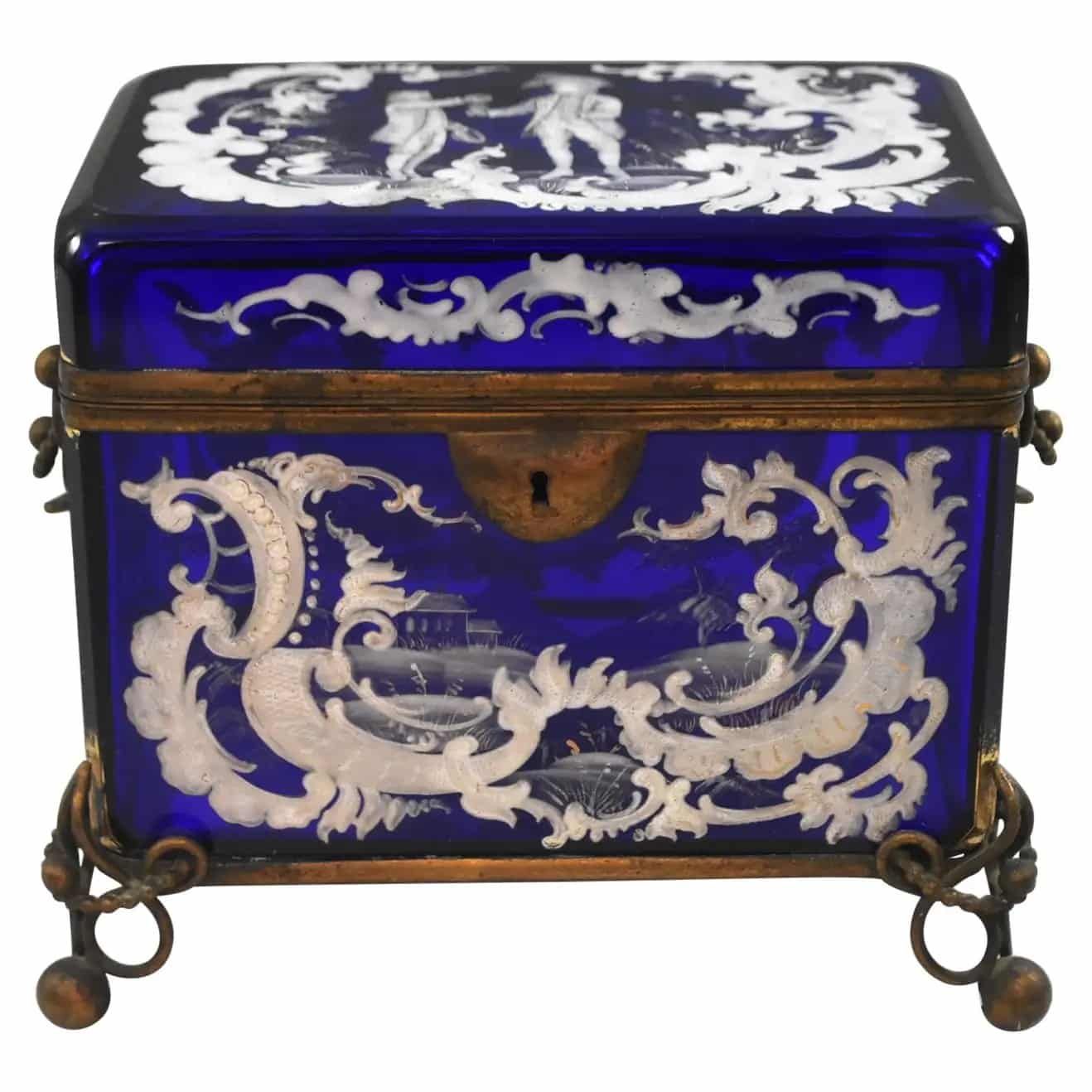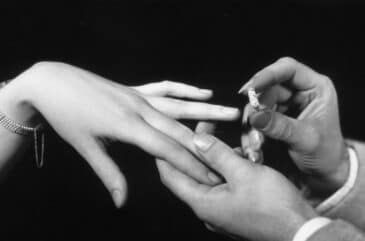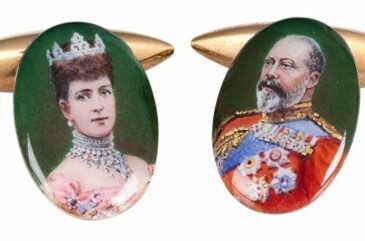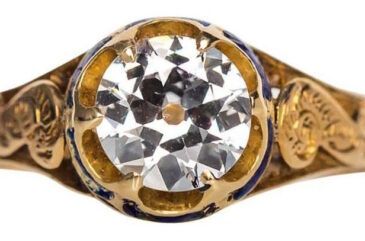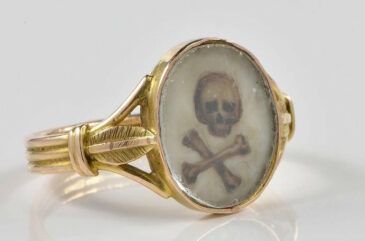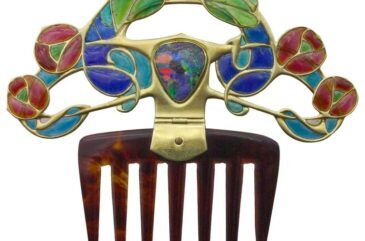Also referred to as trinket boxes and jewelry caskets, jewelry boxes are as much a part of the experience of owning jewelry as the bijoux themselves. Thought to have been in day-to-day use for thousands of years, they are as multifaceted as any diamond and just as pleasing to the eye.
Below, we’ll look at five popular types of vintage and antique jewelry boxes that conveniently organize your treasures while adding a dash of style to your dresser or vanity.
What Is a Vintage Jewelry Box?
Any portable container used to hold jewels and small objets de vertu can be considered a jewelry box. But over the centuries, these receptacles have become specialized to better — and more beautifully — organize our prized possessions and keep them safe from damage (and theft).
According to Andrew Campbell, of AC Silver, a UK-based dealer of antique and vintage jewelry and objects, jewelry boxes have existed since at least 5,000 B.C., when the ancient Egyptians used them to hold their adornments.
Vintage jewelry boxes are those that are at least 20 but less than 100 years old, the age at which they become antique.
Why Choose Vintage?
“Most people who want vintage jewelry boxes are looking to store their precious heirlooms, or they’re avid collectors and need a piece that’s both practical and beautiful to place their treasures in,” says Tom Watson, of Antique Avenue in Ontario, Canada. In other words, they’re seeking a box worthy of its contents.
“A vintage jewelry box can often be unique in its design,” adds Campbell, so it stands out from the versions widely available at retail. Design lovers may also appreciate the styles and craftsmanship of previous eras.
Popular Styles and Materials
Jewelry boxes span the history of design, so no matter what style or materials appeal to you, there’s one to suit your taste and decor.
Here are five categories of vintage and antique jewelry boxes that are particularly popular.
Victorian Jewelry Boxes
Victorians were obsessed with household trinkets, and jewelry boxes were no exception. Although the era is associated with rigid views about morality, the taste of the time skewed heavily toward the ornate and imaginative. Minimalists they were not. Witness this Victorian jewelry box made of glass. If ever there was a style perfect for holding excessive embellishments, it’s this one.
Art Deco Jewelry Boxes
Art Deco jewelry boxes echo the movement’s sleek, geometric jewelry designs and employ many of the era’s most popular materials, like lacquered wood, Lucite, frosted glass and Bakelite. When scouting out Art Deco jewelry boxes, look for makers that flourished in the era, such as Lalique and Cartier.
Mid-Century Modern Jewelry Boxes
Mid-century modern is a perennial favorite among design aficionados. Whether a clean-lined teak box by George Nelson for Herman Miller or an I Dream of Jeannie–style bonbonnière, a mid-century modern jewelry box is a great way to get the look.
Wooden Jewelry Boxes
Because of the material’s adaptability, flexibility and availability, jewelry boxes made of wood run the gamut of periods, styles and countries of origin, from an ornate 17th-century marquetry strong box to a sensuous, mid-century carved wooden jewelry box by Alexandre Noll. If you’re looking for a standing jewelry box, you’re likely to find one in wood.
Metal Jewelry Boxes
Metal’s many varieties — bronze, silver, gold and steel, to name a few — mean that, like wood, it is used in jewelry boxes across cultures, times and genres. However, thanks to the new techniques introduced with the Industrial Revolution, metal jewelry boxes truly blossomed in the Art Nouveau era, from 1890 to 1910, remaining popular throughout the 20th century.
A Color for Every Palate
Name a hue and you can undoubtedly find a jewelry box to match it. Here are a few of our favorites.
Black
Make a dramatic statement with a 19th-century black lacquer box with a red satin lining or a black leather Gucci case from the 1980s.
Silver
“Silver has a lovely warm soft feel,” says Campbell, who has a particular affinity for the metal. Its malleability suits it to both super-intricate designs, as in a hand-carved Buccatelli example, and streamlined ones, like an unadorned sterling-silver box.
Beige
Even minimalists need to keep their jewelry somewhere. An Italian alabaster box or even a 1950s Murano glass jewelry dish makes a stylishly subtle container for your jewelry.
Blue
Every jewelry lover knows that great things come in blue boxes, so why not give your room a pop of color with a blue jewelry box like this antique Chinese enamel beauty?
Vintage Jewelry Box Q&A
We answer some of your most pressing questions about selecting and caring for vintage and antique boxes.
How do you select a jewelry box?
“It’s always important to consider both the beauty of the box as well as the size and functionality,” says Watson. “Some boxes may be stunning, but if they aren’t the right size or don’t have the proper storage compartments, they aren’t going to be practical.” Your jewelry collection — the number of pieces you own, as well as their size, durability and value — should guide your decision. Do you need a large jewelry box with many separators and a velvet lining to minimize scratches, or would a bedside trinket box for holding your most-often-worn pieces be best?
Are vintage jewelry boxes valuable?
They certainly can be. “I always suggest looking for quality above all else when you are considering the value of a vintage jewelry box,” says Watson. “It’s the small details that really matter. In addition, one should always look at the materials used, as well as if one can identify any maker’s marks.”
Campbell concurs. “Quality is so very important,” he says. “Clarification of the gauge or thickness of silver, for instance, can determine an exceptional example. Deeply struck hallmarks can quickly clarify gauge. Selecting a jewelry box made by a renowned silversmith is always advisable.”
What is the difference between antique and vintage jewelry boxes?
It depends on whom you ask, but generally speaking, a vintage piece is one that’s more than 20 years old. That said, there are those who maintain that only objects at least 50 years old qualify. By most definitions, however, jewelry boxes ranging from luxe 1920s Art Deco designs to postmodern ’70s, ’80s and ’90s ones are vintage.
Antiques are pieces made more than 100 years ago. Art Nouveau and Edwardian jewelry boxes, from the turn of the 20th century, for example, are considered antique.
How do you clean a vintage jewelry box?
How you clean a vintage or antique jewelry box depends on what it’s made of. A wooden box might be wiped with a dry cloth, while a lacquer or porcelain one can be cleaned with a soft, damp one. Silver jewelry boxes can usually be cleaned with silver polish.
Ornate boxes with lots of small crevices can be refreshed with a compressed-air duster. For exceptionally rare or fragile jewelry boxes, we recommend professional cleaning to keep them as pristine and sparkling as the jewels inside.
